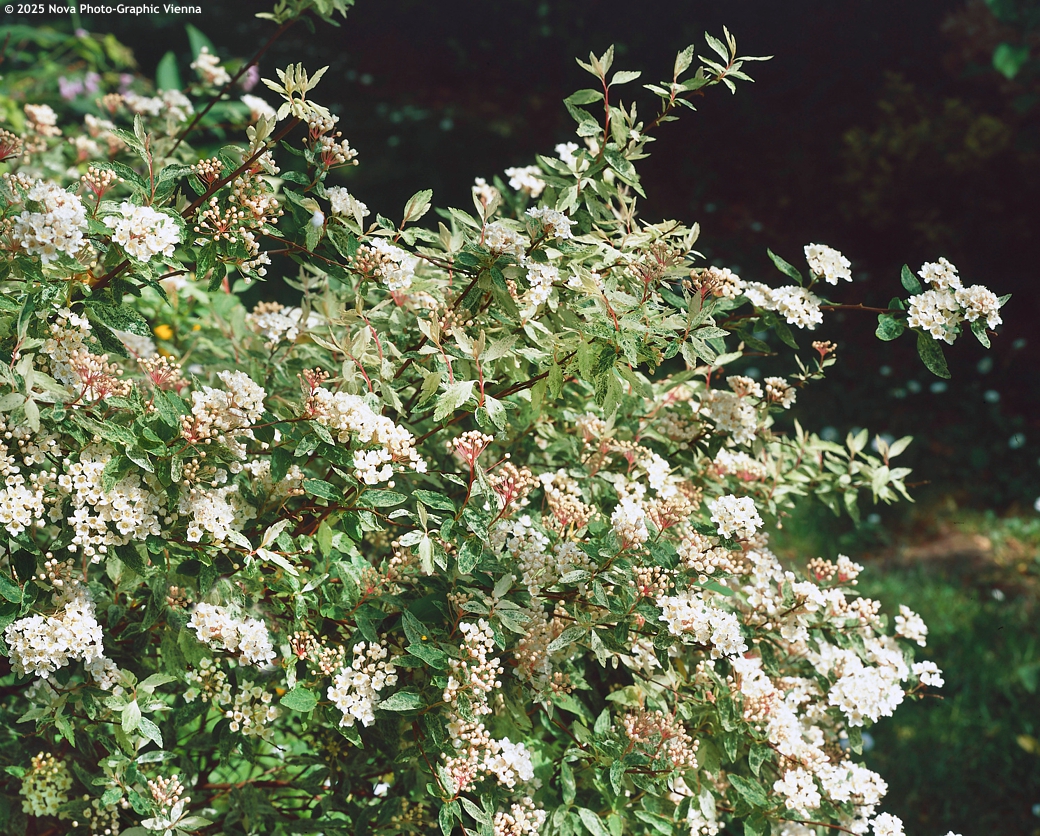Spiraea x vanhouttei 'PINK ICE' Van Houtte's spirea
Spiraea
Genus Spiraea was first described by Carl Linnaeus in 1753 in his Species Plantarum. The name derives from the Greek word speira – “wreath” – referring to the delicate arrangement of flowers into wreath‑like corymbs. Spiraeas comprise around seventy species of deciduous shrubs distributed across the temperate regions of the Northern Hemisphere. Botanists traditionally divide them into three groups based on inflorescence type: the salicifolia group with terminal panicles, the japonica group with flat corymbs, and the canescens group with simpler corymbs on short lateral shoots. The advantage of this classification is clarity – gardeners can easily infer flowering time and pruning method. Its drawback is artificiality: boundaries are not always clear and hybrids between groups complicate taxonomy. Nevertheless, the system helps navigate the rich assortment and simplifies practical decisions.
Van Houtte’s spirea is the result of deliberate hybridization carried out by the French nurseryman René Billiard around 1862 at the horticultural centre in Fontenay-aux-Roses near Paris. He combined Spiraea trilobata from Mongolia with the Chinese Spiraea cantoniensis, creating a shrub with arching branches and abundant spring flowering. The name honours Louis Benoît Van Houtte (1810–1876), a Belgian botanist and publisher of the famous journal Flore des Serres et des Jardins de l’Europe, which in the 19th century spread knowledge of exotic plants. This hybrid became a symbol of Victorian elegance – its “bridal veil” of white blossoms appeared in city parks and in period garden paintings, where it represented purity and romance.
Pink Ice spirea will captivate you at first sight, as soon as the new leaves emerge in spring: the young foliage shows a bright pink tone, which within days transforms into delicately variegated leaves. The base colour is green, infused with creamy white patches, while the youngest parts blush pink, so the shrub resembles a pastel mosaic. New twigs are vivid red. In May and June, dense clusters of small white flowers appear among the leaves, contrasting with the variegation and giving the shrub a lightness, as if dusted with snow. After flowering, numerous small seed follicles develop, but they remain sterile (containing no seeds or only non‑viable embryos). If left on the branches, they can give the shrub a slightly untidy appearance, so it is recommended to prune the spent flower clusters promptly, which encourages production of new shoots and foliage, keeping the plant fresh and attractive. The habit is compact and mostly upright, reaching about 1–1.5 meters in height and width, making it suitable for smaller gardens and urban plantings.
This cultivar was selected by British breeder Peter Catt and introduced to the market in 1995 through his Liss Forest Nursery in Hampshire. Catt was among Europe’s most prominent growers of ornamental shrubs, renowned not only for his plant‑hunting journeys but also for a series of cultivars of his own, including Spiraea japonica ‘Golden Princess’ and the much‑loved Choisya × dewitteana ‘Greenfingers’, which we cherish for its large leaves, fragrant flowers, and excellent hardiness. Peter Catt was a long‑standing chairman of the woody plant trials committee at the Royal Horticultural Society, recipient of the Veitch Memorial Medal (1998) and the RHS’s highest honor, the Victoria Medal of Honour (2018). He also served as honorary president of the Liss Horticultural Society. He passed away in 2025, but his cultivars and nursery legacy live on and continue to shape modern horticulture.
‘Pink Ice’ is an ideal choice for gardens where you want to combine gentle elegance with ease of care. Thanks to its compact growth, it suits small front gardens, urban plantings, or as a lawn specimen. It looks striking alongside dark‑leaved shrubs such as purple-leaved varieties of Physocarpus opulifolius, or conifers that highlight its variegation. It can also be used in informal hedges and mixed borders, where it acts as a fresh splash of color, while in perennial beds it pairs beautifully with blue‑flowering plants such as catmints, sages, or rudbeckias. Its frost resistance and soil tolerance make it suitable even for less experienced gardeners.
Van Houtte’s spirea ranks among the most reliable and least demanding ornamental shrubs – we call them “fool‑proof.” It thrives in sunny sites and ordinary garden soil, requires little watering, and tolerates light drought well. After flowering, it is advisable to remove spent inflorescences to maintain a neat appearance and stimulate new growth. This is also the best time for pruning as it bloom on previous year’s growths. Thanks to plant’s resilience and longevity, it is suitable not only for open ground but also for large containers, where it shines on terraces or balconies – provided it receives sufficient moisture and regular feeding to stay vigorous. The species is resistant to browsing by wildlife, non‑toxic to humans and domestic or farm animals, and fully hardy down to about –40 °C (USDA zone 3a), requiring no winter protection.
Last update 19-11-2025

288 Kč

288 Kč
Goods are shipped all over Europe. For Russia and U.K. and for further details please read about SHIPPING OPTIONS HERE.
Are you interested in a serious discount for orders NOV-FEB? Check your options here.
THE PRICES INCLUDE VAT of 15%. For quick conversion you can use 1 CZK = approx. 0.04 EUR
- STANDARD QUALITY - Plants of this group are 1st class quality with number of branches and overall density adequate to their size and age, considering they were container grown.
- DE LUXE QUALITY - This label guarantees a luxurious quality of manually selected plants that, compared to their height and age, are exceptionally dense and beautiful.
- EXTRA - These plants are usually mature and bigger specimens with exceptional overall appearance.
- STANDARD (as described in the plant form) means a tree with a trunk of 190-210 cm and a crown at the top, unless specified differently. The commercial size for trees is their girth measured in the height of 1m from ground.
- HOBBY - These plants are of the same quality as our standard-quality plants but younger and therefore cheaper.
- SHRUB - a woody plant with branches growing bushy from the ground level.
- HALF-STANDARD or MINI-STANDARD - a small tree with shorter trunk, its size is usually specified.
- FEATHERED - These are trees with branches growing already from the base of the trunk and up along the stem.
- GRASSES and PERENNIALS - Sizes given usually read the diameter of the pot or the clump, as specified.












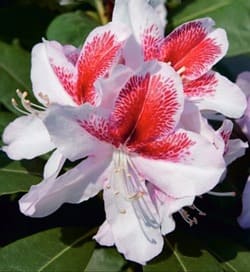




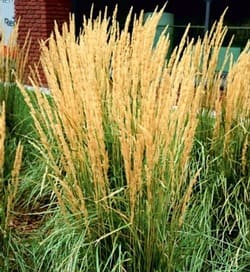
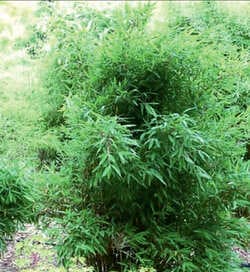
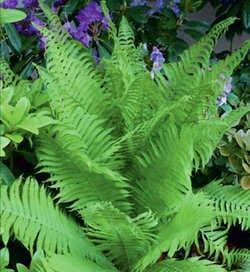




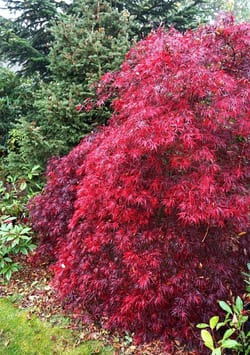
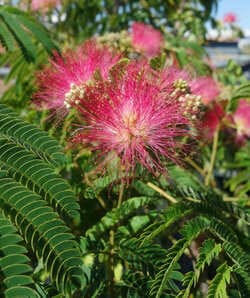
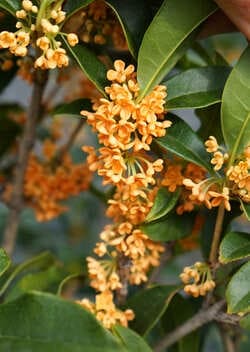



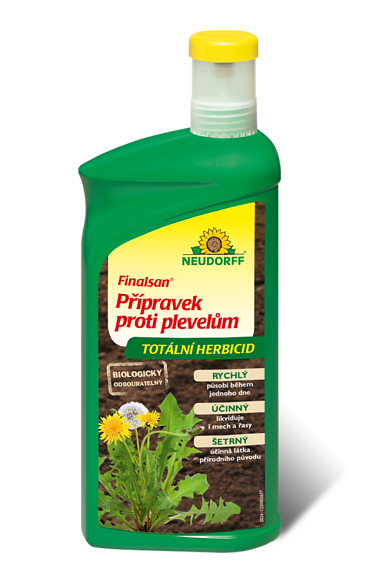



.jpg)
